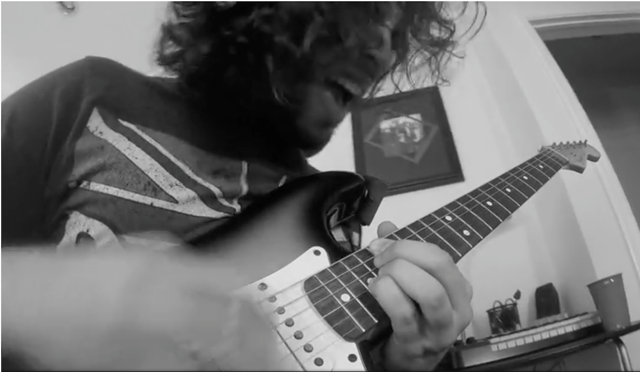Altered tunings on guitar can provide a welcome distraction from standard tuning, if only to break free from patterns, shapes and well-worn paths for a while, and get those creative juices flowing. The possibilities are endless when it comes to alternate tunings for guitar but one of the things I find most intriguing about them is the renewed perspective they can give you on standard tuning. So, here are 5 altered tuning well-worth checking out.
1. DADGAD
DADGAD tuning is probably a good first port of call for anyone new to dabbling in alternate tunings. Simply tune your low E string down to D, your B string down to A, and your high E string down to D. If you strum the open strings you have a Dsus2 chord which is nice in itself, and neither minor nor major, which gives this tuning a modal air and a very broad canvas with which to work. DADGAD is also open string heaven as anything you play in the key of D will sound fantastic, though as DADGAD master Pierre Bensusan points out in this video, the tuning lends itself well to playing in other keys once you get the hang of it.
2. Open G Tuning (D, G, D, G, B, D)
Open G Tuning is another great one for incorporating open strings. If you strum the open strings you’ll hear a familiar G major chord and a one finger barre will also give you an easy major chord anywhere on the neck. Open G is tuning of choice for Stone’s guitarist Keith Richards (with the low E string removed) and features in many Stones songs including, ‘Honky Tonk Woman’, ‘Start Me Up’, ‘Brown Sugar’ and ‘Gimme Shelter’, among others. Open G is also heavily used in Blues with Robert Johnson pioneering the tuning during his prolific recording spree the 1930s.
3. P4 Tuning (E, A, D, G, C, F)
P4 tuning, or all fourths tuning, has seen a rise in popularity of late; simply tune your B string up to C and your high E string up to F, or if you don’t like the added string tension tune the other four strings down a semitone (Eb, Ab, Db, Gb, B, E). What you get is a perfectly symmetrical fretboard as the distance between each string is a consistent 4th. Fourths tuning basically means that any chords shape or scale pattern you know on the first four strings of the guitar in standard tuning (E, A, D, G) can now be repeated on any set of strings, thereby reducing the amount of stuff to learn by about 75%. This huge time-saver is not without its shortcomings though as open position chords go out the window. What you gain, however, is greater access to scales and chords all over the fretboard which is great for jazz and fusion. I’m a big fan of this tuning and have been using it for a couple of years. While you can still adapt a lot of material from standard tuning, if you’re playing covers it’s probably not worth the time investment.
4. New Standard Tuning (C, G, D, A, E, G)
I have to admit, this one is still on my to-do list but is very intriguing. New Standard Tuning (NST) was developed by King Crimson guitarist Robert Fripp in the early 80s; the first five strings are tuned in fifths with the top two strings a minor third apart. It’s probably worth having a look at this tuning in theory before you tune your high E string up a whole string-snapping two tones (or simply replace it with a G string), which you can do here, simply dial up New Standard Tuning on the drop down menu and judge for yourself whether it’s worth the trouble.
5. 3rds Tuning (E, Ab, C, E, Ab C)
The theory behind this tuning is incredibly logical as what you end up with is a chromatic fretboard where every note is contained within the span of four frets, meaning you can play any scale or chord in any key in one four-fret position. Sounds good, right? The interesting thing about this tuning is that there’s really nothing you can translate from standard tuning so it’s like a whole new beginning on the instrument, only with a head-start technique-wise. 3rds tuning is the weapon of choice for jazz guitarist Ralph Patt, and his website has a ton of resources if you’re intrigued.
Altered tunings on guitar can be a welcome creative outlet, especially if you’re stuck in a rut; one thing is for sure though, you’ll go back to standard tuning with a whole new perspective.



